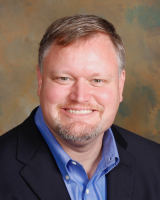Identifying Novel Therapeutic Combinations with 131I-MIBG to Treat Relapsed and Refractory Neuroblastoma

Background
Neuroblastoma is among the most common and deadly cancers of childhood. While some improvement has been made in the treatment of high-risk neuroblastoma through the escalation of toxic high-dose chemotherapy and immunotherapy, the overall prognosis for these patients is still poor. Alternative approaches using targeted therapy are critically needed.
The targeted radiopharmaceutical 131I-MIBG delivers prolonged targeted high-energy radiation to neuroblastoma tumor sites throughout a patient's body. While 131I-MIBG is one of the most active experimental agents to treat relapsed and refractory neuroblastoma, there is significant room for improvement in efficacy and, as an orphan drug for a rare disease, pharmaceutical companies have largely neglected 131I-MIBG for further development. Other molecularly targeted therapies are continually becoming available for clinical trials in pediatric patients and many of these have also shown some efficacy in neuroblastoma.
Project Goal
We propose to combine novel neuroblastoma-targeted agents with 131I-MIBG. We will test the combination of molecularly targeted agents with radiation first, then translate promising agents for full pre-clinical testing in unique mouse models of MIBG avid neuroblastoma. Using these detailed pre-clinical studies we will rapidly advance promising combinations into Phase I clinical trials in children.
"As a new investigator just starting an independent lab, funding from the Alex's Lemonade Stand Foundation has made a critical difference and given a huge boost in pushing forward my research and my career as a physician/scientist in pediatric oncology. It has given me the freedom to explore new and exciting therapeutic options in the lab to rapidly move new treatments into children with cancer as quickly as possible." 12/2014

